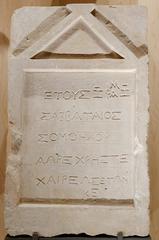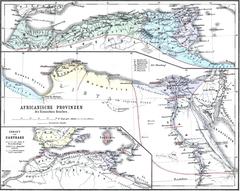Hermopolis Parva: Complete Guide to Visiting Hours, Tickets, and Markaz Bilqas Historical Sites
Date: 14/06/2025
Introduction
Hermopolis Parva, located in the fertile Nile Delta within Markaz Bilqās, is an archaeological treasure offering a window into the dynamic religious, cultural, and administrative life of ancient Lower Egypt. Revered in antiquity for its association with Thoth—the god of wisdom and writing—and the Ogdoad, its unique theological traditions set it apart. As the capital of the 15th nome of Lower Egypt, Hermopolis Parva was significant from the Old Kingdom through the Greco-Roman eras.
Today, the site invites exploration of the Temple of Thoth, archaeological mounds at Tell el-Naqus, and the enduring local culture of the Nile Delta villages. Though less prominent than Egypt’s most famous monuments, Hermopolis Parva’s blend of Egyptian cosmology, Hellenistic influences, and local traditions makes it a compelling destination for travelers and scholars.
This guide offers a detailed overview of Hermopolis Parva’s history, practical information for visitors—including opening hours and ticketing—travel tips, accessibility considerations, nearby attractions, and essential FAQs.
For further research and advice on planning your trip, consult the Egyptian Ministry of Tourism, Ancient Egypt Online Timeline, and travel resources like Adequate Travel.
Contents
- Introduction
- Historical Background
- Ancient Origins and Etymology
- Historical Development
- Visiting Information
- Opening Hours
- Ticket Prices
- How to Get There
- Accessibility and Facilities
- Special Events and Tours
- Nearby Attractions
- Religious and Cultural Significance
- Archaeological Features
- FAQs
- Visuals and Maps
- Related Articles
- Conclusion and Travel Tips
- References
Historical Background
Ancient Origins and Etymology
Hermopolis Parva, also known as Hermopolis Mikra (Greek for “Small City of Hermes”), was one of two ancient Egyptian cities bearing the name Hermopolis. Its significance arose from the Greek identification of Thoth with Hermes, symbolizing the syncretism of local and Hellenistic religious traditions. Located at Tell el-Naqus near Baqliya, the city served as the administrative heart of the 15th nome of Lower Egypt, strategically situated near important Nile branches.
Historical Development
-
Pharaonic Era: Hermopolis Parva’s origins trace back to the Old Kingdom (c. 2686–2181 BCE), serving as a major cult center for Thoth. The city was notable for its temple, which attracted priests and scholars from across Egypt.
-
Greek and Roman Periods: Under Greek and Roman rule, the city was further Hellenized, with Thoth equated to Hermes. This period saw continued religious importance and adaptation to new influences.
-
Islamic and Medieval Periods: The city declined following the Arab conquest, but archaeological remnants still bear witness to its past prominence.
Visiting Hermopolis Parva: Practical Information
Opening Hours
- Daily: 8:00 AM – 5:00 PM
- Note: Hours may vary on holidays or for special events. Always confirm before your visit.
Ticket Prices
- General Admission: 80 EGP
- Students/Seniors: 40 EGP
- Children (under 12): Free
- Tickets: Available at the entrance or online via the Egyptian Ministry of Tourism.
How to Get There
- By Car: Approximately 2.5 hours from Cairo via the Cairo-Alexandria Desert Road.
- By Public Transport: Buses/minibuses run from Cairo to Baqliya or Bilqas; local taxis connect to Tell el-Naqus.
- Guided Tours: Day tours from Cairo or Mansoura are available through reputable operators.
Accessibility and Facilities
- Terrain: Mostly uneven; moderate walking required.
- Facilities:
- Basic visitor center with displays
- Restrooms
- Guided tour services (recommended for context)
- Accessibility: Limited for those with mobility impairments; plan accordingly.
Special Events and Tours
- Cultural Events: Occasionally, especially in peak season (October–April).
- Guided Tours: Highly recommended—book on-site or through a tour agency.
Nearby Attractions
- Mendes: Ancient temple ruins nearby.
- Tanis: Renowned for royal tombs.
- Rosetta: Site of the Rosetta Stone’s discovery.
- Mansoura: Provides accommodation and serves as a travel hub.
Religious and Cultural Significance
Hermopolis Parva is celebrated for its association with the Ogdoad—eight primordial deities (Amun, Amaunet, Heh, Hehet, Kek, Keket, Nun, Naunet) representing elements like water, infinity, and darkness. The city’s main temple was dedicated to Thoth, the god of wisdom and knowledge, and was a center for theological study, ritual, and pilgrimage.
Iconography from the site—frog- and serpent-headed figures—reflects the Ogdoad’s symbolic representation of creation and transformation. The city’s theological ideas influenced broader Egyptian cosmology and persisted into the Greco-Roman period through religious syncretism.
Archaeological Features
City Layout and Main Sites
- Tell el-Naqus: Archaeological mound with visible temple foundations, pottery shards, and remnants of administrative buildings.
- Temple of Thoth: Once a grand structure with pylons and columned halls, now in ruins but still accessible; decorated blocks and inscriptions remain visible.
- Necropolis: Outlying tombs from various periods, reflecting a blend of Egyptian and Hellenistic elements.
- Artifacts: Statues, amulets, and stelae displayed in Cairo and Alexandria museums.
Modern Village
The present-day village of Tell el-Naqus overlays much of ancient Hermopolis Parva. Visitors can experience local life—markets, traditional houses, and Nile-irrigated fields.
Practical Travel Information
Getting There
- From Cairo: About 150 km northeast by car; public transport to Mansoura or Bilqas, then taxi/local guide.
- From Mansoura: 35 km by road; taxis or private transfers are the most reliable.
Entry Requirements
- Passport: Six months’ validity required.
- Visa: Obtainable on arrival or via e-visa (Ireland.ie).
Safety, Health, and Etiquette
- Dress Modestly: Cover shoulders/knees; women may need scarves for religious sites.
- Health: Bottled water only, avoid ice, and consider vaccinations for Hepatitis A, typhoid.
- Security: Stay vigilant, especially in crowded areas; carry ID and avoid political gatherings.
- Tipping: 10–15% is customary.
- Photography: Allowed for ruins; ask permission before photographing people.
Accommodation
- Mansoura: Offers guesthouses and mid-range hotels; book ahead during peak season.
Frequently Asked Questions (FAQ)
Q: What are Hermopolis Parva’s visiting hours?
A: 8:00 AM – 5:00 PM daily; confirm for holidays.
Q: Are tickets required?
A: Yes; 80 EGP (general), 40 EGP (students/seniors), children under 12 free.
Q: Are guided tours available?
A: Yes; highly recommended for historical context.
Q: Is the site accessible for people with disabilities?
A: Accessibility is limited; assistance may be needed.
Q: How do I get there from Cairo?
A: Car or public transport to Mansoura/Bilqas, then taxi to the site.
Q: Are there facilities at the site?
A: Limited; bring water/snacks, sun protection, and wear sturdy shoes.
Visuals and Maps
- Images: Seek official galleries for photos of the Temple of Thoth, archaeological mounds, and maps.
- SEO Tip: Use alt tags like “Hermopolis Parva visiting hours,” “Temple of Thoth Hermopolis Parva,” and “Dakahlia historical sites.”
Related Articles
Conclusion and Travel Tips
Hermopolis Parva provides a rare chance to explore a city at the crossroads of Egyptian religion, administration, and culture. Plan your visit around its daily opening hours, consider a guided tour, and explore nearby sites for a deeper appreciation of the Nile Delta’s heritage. For an optimal experience, visit between October and April, and use the Audiala app for real-time updates, ticketing, and self-guided tours.
By respecting local customs and supporting sustainable travel, you help preserve this vital chapter of Egypt’s past for future generations.
References
- Wikipedia on Hermopolis (Lower Egypt)
- Egyptian Ministry of Tourism
- Adequate Travel - Temple of Thoth at Hermopolis Parva
- Egyptian Myths - Ogdoad
- Ancient Egypt Online Timeline
- Land of Pyramids - Ogdoad Hermopolis
- PlanetWare - Egypt Tourist Attractions
- Ireland.ie - Egypt Travel Advice
- Egyptian Streets - Visiting Egypt Tips
- Audiala App Official Website

